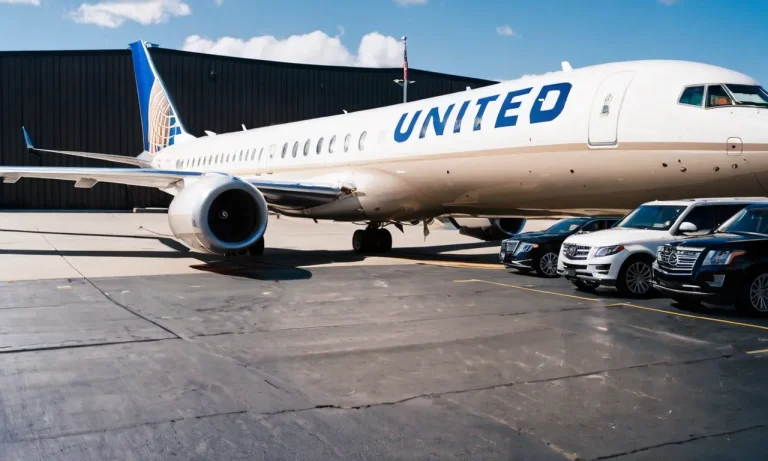What Will Happen To Las Vegas When Lake Mead Dries Up?
Las Vegas is a desert city that relies on water from Lake Mead to sustain its 2 million residents and over 40 million annual visitors. But with climate change and overallocation of the Colorado River water that feeds Lake Mead, there is a real possibility that this vital water source could dry up within the next decade.
If you’re short on time, here’s a quick answer to your question: If Lake Mead dries up, Las Vegas would face catastrophic water shortages, likely forcing strict water rationing, mass migration out of the city, and collapse of its tourism-based economy.
In this comprehensive article, we will analyze the likelihood of Lake Mead drying up, explain the water shortage measures already underway, detail the wide-ranging impacts expected across Las Vegas if the drought persists, and look at potential solutions that could save Sin City from the growing threat of climate disaster.
Current Status of Lake Mead and Water Shortages
Declining Lake Mead Water Levels Over Past Decades
Lake Mead, which provides water to over 25 million people, has seen concerning declines in water levels over the past few decades. According to the U.S. Bureau of Reclamation, the water level of Lake Mead has fallen around 143 feet since January 2000.
At one point in summer 2022, water levels reached just 27% of the reservoir’s full capacity – the lowest levels since Lake Mead filled after the Hoover Dam’s completion in the 1930s.
While winter snowpacks and runoff from the Rocky Mountains provide some replenishment, it has not been enough to counterbalance water usage and evaporation losses accelerating with rising regional temperatures.
Scientists estimate the Colorado River Basin has experienced a 20% loss in flow compared to the 20th century average. Depletion of groundwater and reservoirs are visually apparent through the dramatic bathtub ring around Lake Mead.
Existing Water Conservation Efforts and Usage Cuts
In response to the falling water levels, mandatory cuts have been imposed on states reliant on the Colorado River to prop up Lake Mead reserves. As of 2022, Arizona, Nevada and Mexico will see reduced water allocations from the Colorado River.
For the first time, Nevada and Arizona did not receive their full water allotments – 400,000 acre-feet and 512,000 acre-feet cuts respectively.
Additionally, the U.S. Bureau of Reclamation has incentivized voluntary conservation programs for districts with water rights. Support includes funding for water use studies, irrigation checks, and rebates for water-efficient technologies like soil moisture sensors or low-flow toilets.
Public awareness campaigns, like Las Vegas Valley Water District’s “Water Smart Landscapes Rebate”, aim to promote xeriscaping drought-tolerant residential landscaping.
Projections for Lake Mead Under Climate Change Models
Looking forward, most climate projections paint an uncertain future for Lake Mead water reserves. Increased periods of intense drought punctuated with extreme weather events like flooding and reduced snowpack will make water supply hard to predict and manage.
Under intermediate emissions scenarios, scientists expect Colorado River flows could decline another 14-31% by 2050.
If conservation measures and supply cuts are not sufficient to stabilize the lake, the Bureau of Reclamation may employ emergency responses like constructing infrastructure to pump water between Lake Mead and Lake Powell reservoirs.
Additionally, states and districts may need to renegotiate allotments based on priority rights. Scientists are also exploring supplemental water importation and desalination – expensive options, but reality if the overallocated Colorado River continues to dry.
Consequences for Las Vegas If Lake Mead Runs Dry
Mass Migration Out of Las Vegas
If Lake Mead were to run dry, the consequences for Las Vegas would be dire. As one of the primary sources of water for the city, the depletion of the lake would lead to a mass migration out of Las Vegas.
Without a reliable water supply, it would be impossible for the city to sustain its current population. Residents would be forced to relocate to areas with more abundant water resources, resulting in a significant decrease in population.
This would have a profound impact on the economy, infrastructure, and overall livelihood of the city.
Collapse of Tourism Industry and Casinos
The tourism industry and the famous casinos of Las Vegas would be hit particularly hard if Lake Mead were to dry up. The iconic fountains, pools, and water features that attract millions of visitors each year would become a thing of the past.
Without water, the hotels and resorts would struggle to provide the luxurious experiences that people have come to expect. The loss of tourists and revenue would have a cascading effect on the local economy, leading to job losses and a decline in businesses that rely on tourism.
Water Rationing and Building Water Pipelines
In the face of a dry Lake Mead, Las Vegas would have to implement strict water rationing measures to ensure the remaining water supply is managed efficiently. Residents and businesses would have to drastically reduce their water usage, leading to changes in everyday activities such as shorter showers and limited outdoor water usage.
Additionally, the city would have to explore alternative sources of water, such as building water pipelines to bring water from other locations. This would require significant investment in infrastructure and could result in increased water costs for consumers.
Impacts on Power Generation, Agriculture and Environment
The drying up of Lake Mead would have far-reaching impacts beyond just water supply. The lake also serves as a vital source of water for power generation, agriculture, and the surrounding environment. Power plants that rely on the lake’s water for cooling could face challenges in maintaining operations, potentially leading to power shortages.
The agricultural sector, which relies on water from the lake for irrigation, would also suffer, resulting in reduced crop yields and potential job losses. Additionally, the environmental consequences of a dry lake would be significant, with habitats being disrupted and wildlife populations at risk.
Solutions and Contingency Plans
As the water levels in Lake Mead continue to decline, it is crucial for Las Vegas to implement solutions and contingency plans to mitigate the impact of the drying lake. The following strategies can help the city adapt to the changing water situation:
Water Conservation and Efficiency Upgrades
One of the most effective ways to address the water crisis is through water conservation and efficiency upgrades. Las Vegas has already made significant progress in this area, implementing strict regulations and promoting water-saving practices among residents and businesses.
However, there is still room for improvement. By investing in advanced water-saving technologies and infrastructure upgrades, such as smart meters and efficient irrigation systems, the city can further reduce its water consumption and ensure a more sustainable future.
Exploring Alternative Water Supplies
Las Vegas can also explore alternative water supplies to supplement or replace the dwindling resources from Lake Mead. This may involve tapping into underground aquifers, exploring water reuse and recycling options, or even importing water from other sources.
While these alternatives may come with their own challenges and costs, they can help diversify the city’s water sources and provide a buffer against the impacts of a drying lake.
Revising Laws on Water Rights
Another important aspect to consider is the revision of laws on water rights. Currently, water rights in the western United States are based on a “first in time, first in right” principle, which can lead to inefficiencies and conflicts.
By revising these laws and implementing a more equitable and sustainable allocation system, Las Vegas can ensure a fair distribution of water resources and encourage responsible water use among all stakeholders.
Weather Modification and Desalination Prospects
Las Vegas can also explore the potential of weather modification and desalination as long-term solutions. Weather modification techniques, such as cloud seeding, can enhance precipitation in the region and potentially increase water supply.
Additionally, desalination technologies can convert seawater into freshwater, providing a reliable source of water for the city. While these options may require significant investment and research, they hold promise for securing Las Vegas’ water future.
It is important to note that these solutions and contingency plans should be implemented alongside efforts to address the root causes of the water crisis, such as climate change and unsustainable water consumption practices.
By taking a comprehensive and proactive approach, Las Vegas can navigate the challenges posed by a drying Lake Mead and ensure a sustainable and prosperous future for its residents.
Conclusion
Las Vegas faces a genuine existential threat if Lake Mead continues falling to dead pool status. While the city has already implemented water saving measures and has contingency plans underway, more needs to be done to curb demand and develop alternative water sources for its 2 million residents.
With the Colorado River basin locked in a climate change-fueled megadrought expected to worsen over time, negotiations and policy changes for stabilizing Lake Mead levels offer hope. But preparedness plans must accelerate now before the lake – and Las Vegas itself – runs dry.








